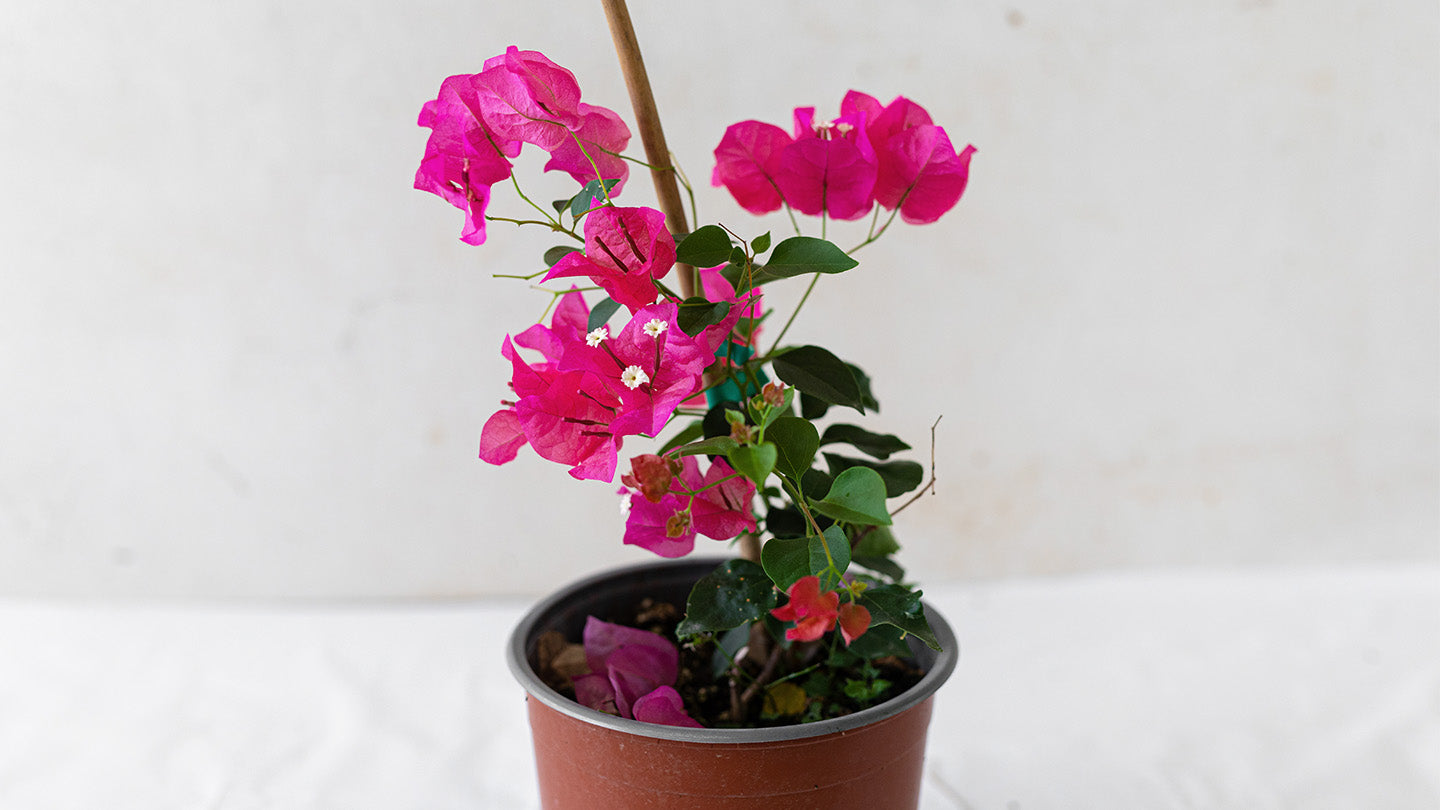cybloom
Bougainvillea Glabra (red)
Regular price
€7,50 EUR
Regular price
Sale price
€7,50 EUR
Unit price
per
Tax included.
Couldn't load pickup availability
Life Form: In its natural state, it's a sprawling climber and shrub with formidable thorns
Family: Nyctaginaceae
Origin: There are over 300 varieties of bougainvillea around the world. Because many of the hybrids have been crossed over several generations, it is difficult to identify their respective origins
The Size: 15–40 ft. tall, 15–40 ft. wide (outdoors); 2–6 ft. tall, 1–3 ft. wide (indoors)
Growth: Bougainvillea needs to be trimmed to maintain its shape, but too much aggressive pruning of new growth will reduce bloom color. The best approach is to prune in the fall after the growing season is complete so the plant will bloom from next season’s new growth.
Lifespan: It was observed that complete life cycle of Bougainvillea bracts including flower is about 28 days.
Temperature: Bougainvillea is a relatively hardy plant, able to withstand a range of temperatures, from tropical highs of 80 degrees Fahrenheit and above, all the way down to 40 degrees Fahrenheit, the lowest temperature it can tolerate
Humidity: Due to its tropical origins, humidity is helpful, too—spritzing the plant with water isn't necessary, but if your home is particularly dry a small humidifier near your bougainvillea can help.
Lightning: Bougainvillea plants are lovers of sunlight and need full daily exposure to thrive. Another important note: The color saturation of your bougainvillea relates to how much sunlight it gets—more light equals brighter hues.
The Soil: When it comes to soil, bougainvillea plants thrive in a moist but well-drained potting mix that's slightly acidic (between a 5.5 and 6.0 pH level). Top your mixture with compost to ensure a rich, nutritious soil, and opt for a pot with at least one drainage hole in the base to lower the risk of root rot.
Watering: Keep your plant evenly moist during the spring, summer, and fall months, and nearly dry in winter (bougainvillea blooms better with drier winter conditions). Water your bougainvillea to saturation, then let the first inch or so of soil dry out before watering again. Too much water can lead to overly-green growth and eventually root rot; too little, and the plant can wilt.
Fertilizer: Bougainvillea requires a lot of nutrition to produce blooms throughout the season, especially indoors (where almost all plants are less likely to bloom as frequently). For the best chance at a successfully full plant, feed your bougainvillea every seven to 10 days using a weak liquid fertilizer.
Reproduction: You can grow bougainvillea indoors. To make bougainvillea truly thrive indoors, maintain your home's indoor temperatures around 60 to 70 degrees Fahrenheit.
Transfer: Because this plant loves light, many growers choose to move their potted bougainvillea outdoors during the summer months to ensure it gets enough rays.
Features of Care: Outdoors, bougainvillea can experience a few pests, most notably the bougainvillea looper caterpillar, which feeds on the leaves of the plant. However, when indoors, you may want to keep an eye out for mealybugs, a common indoor pest.
Difficulties: Mealybugs appear most often on the stems and leaves of a plant, identifiable by the fuzzy, white mass they create as they group together. Mealybugs feed off of new growth, eventually damaging the leaves and causing them to yellow and die. To rid your bougainvillea of mealybugs, treat it with neem oil weekly until they've died off.


